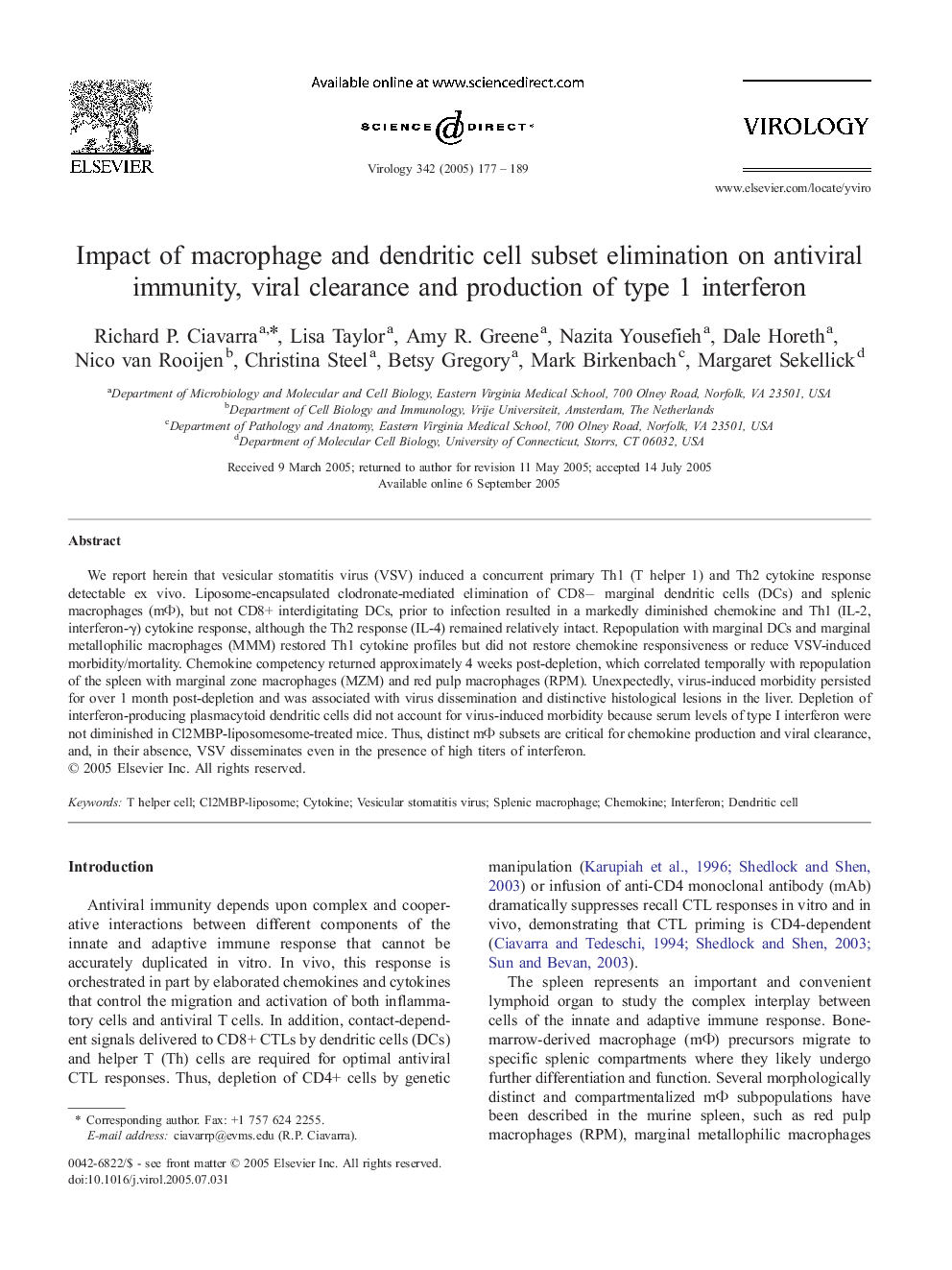| Article ID | Journal | Published Year | Pages | File Type |
|---|---|---|---|---|
| 9286654 | Virology | 2005 | 13 Pages |
Abstract
We report herein that vesicular stomatitis virus (VSV) induced a concurrent primary Th1 (T helper 1) and Th2 cytokine response detectable ex vivo. Liposome-encapsulated clodronate-mediated elimination of CD8â marginal dendritic cells (DCs) and splenic macrophages (mΦ), but not CD8+ interdigitating DCs, prior to infection resulted in a markedly diminished chemokine and Th1 (IL-2, interferon-γ) cytokine response, although the Th2 response (IL-4) remained relatively intact. Repopulation with marginal DCs and marginal metallophilic macrophages (MMM) restored Th1 cytokine profiles but did not restore chemokine responsiveness or reduce VSV-induced morbidity/mortality. Chemokine competency returned approximately 4 weeks post-depletion, which correlated temporally with repopulation of the spleen with marginal zone macrophages (MZM) and red pulp macrophages (RPM). Unexpectedly, virus-induced morbidity persisted for over 1 month post-depletion and was associated with virus dissemination and distinctive histological lesions in the liver. Depletion of interferon-producing plasmacytoid dendritic cells did not account for virus-induced morbidity because serum levels of type I interferon were not diminished in Cl2MBP-liposomesome-treated mice. Thus, distinct mΦ subsets are critical for chemokine production and viral clearance, and, in their absence, VSV disseminates even in the presence of high titers of interferon.
Keywords
Related Topics
Life Sciences
Immunology and Microbiology
Virology
Authors
Richard P. Ciavarra, Lisa Taylor, Amy R. Greene, Nazita Yousefieh, Dale Horeth, Nico van Rooijen, Christina Steel, Betsy Gregory, Mark Birkenbach, Margaret Sekellick,
